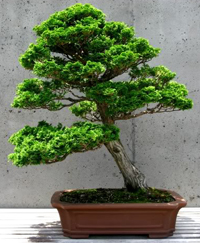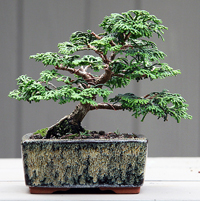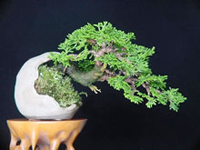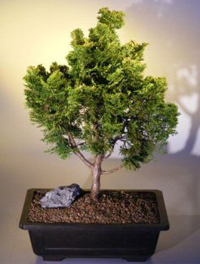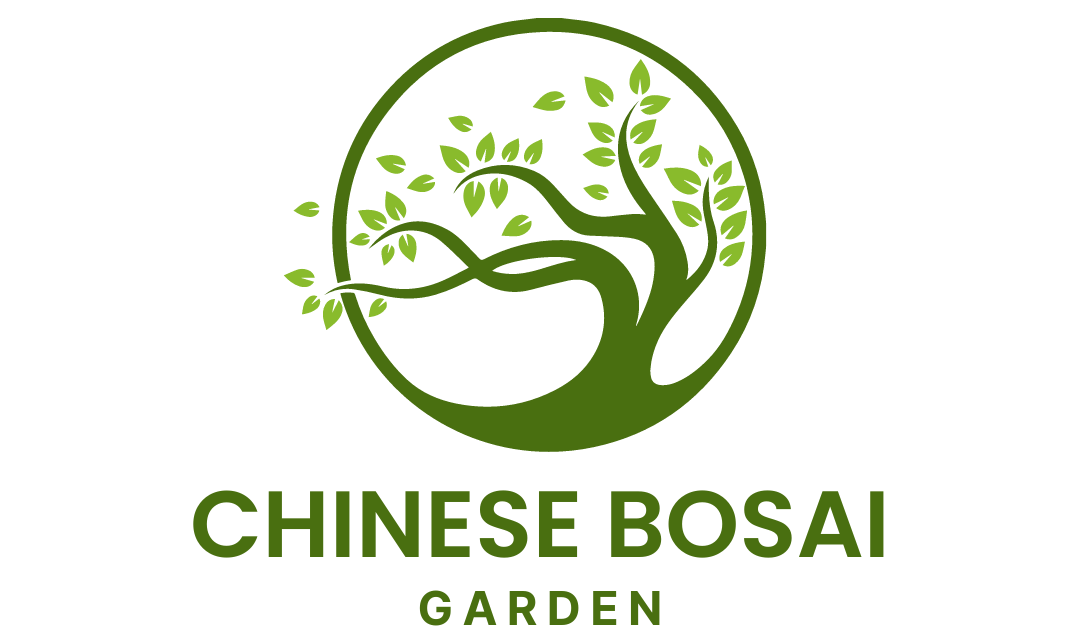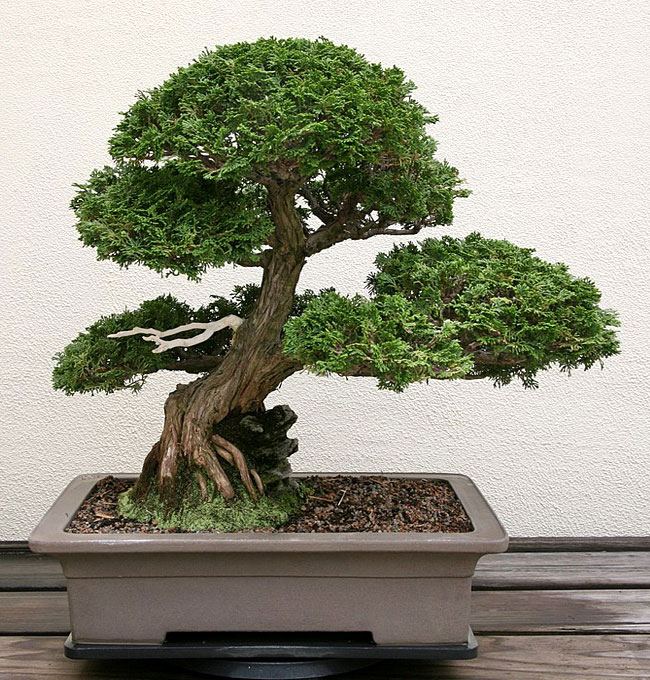The Hinoki False Cypress Bonsai Tree, scientific name Chamaecyparis obtusa ‘Compacta’, is native to southern Japan and the island of Taiwan.
This is an evergreen conifer with dark green fan-like foliage and reddish bark. It is a hardy tree that needs to be grown outdoors.
Additional Information
Family: Cupressaceae
Scientific name: Chamaecyparis obtusa ‘Compacta’
Common Names: Hinoki False Cypress, Compact Hinoki Cypress, Japanese Cypress.
Origin: Native to southern Japan and the island of Taiwan.
Appearance: Hinoki False Cypress has a reddish brown trunk with a dense canopy of dark green leaves. Some cultivars are available in different colors ranging from blue-green to golden yellow and chartreuse. It has drooping flat frondlike branchlets bearing small scale-like leaves. Hinoki False Cypress leaves are borne in pairs of two unequal sizes and shapes.
Flowering: No ornamental flowers. It produces pea-sized orange brown cones with 8 to 10 scales.
Outdoor/Indoor Use: Outdoors.
Light Requirements: It is very important for this tree to get full sun. If there is not enough sunlight, the inner and lower branches might die.
Water Requirements: It likes a humid environment. Grows well in moist but well-drained soil. Requires more daily watering during growing season and less watering during winter months.
Pruning/Training: Through the growing season, pitch tips of young shoots to maintain the shape of the tree. I don’t recommend using scissor pruning because it will turn trimmed leaves brown. Also, avoid pruning back to old wood because the tree needs new wood to bud.
Bonsai Style: Slanted, straight-trunk, windswept, curved-trunk, and literati. It will not work for the broom style.
Fertilizing: Use liquid well balanced fertilizer once every two weeks during growing season.
Repotting: It needs to be repotted once every two to four years when young and only once every three to five years when older. Use fast draining bonsai soil mix.
Hardiness: This is a hardy tree that grows best in the USDA Zone 4 – 8. It needs to be protected from strong winds.
Insects and Diseases: Root rot, needle and twig blights, spruce mites, and scale.
Propagation: By cuttings or seeds.
Buy Hinoki False Cypress Bonsai »
